Advertisement
70 Zebra Finches Rock Out On Electric Guitars At The Peabody Essex
Resume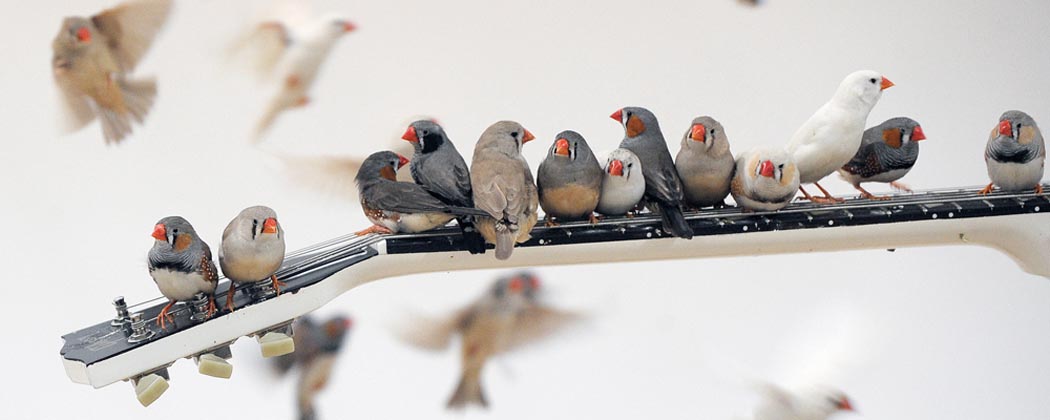
Here’s a kind of crazy question that sounds like the beginning of a joke — or maybe Japanese Koan:
How do 70 live zebra finches play about a dozen electric guitars?
Well the answer can be found through the new art and sound exhibit at the Peabody Essex Museum in Salem, Mass., titled, “From Here To Ear.”
“I mean you probably came here with this mental image of what are these birds going to sound like,” museum curator Trevor Smith said to me when I arrived. “Of course birds are very much something we associate with music. But when you go in there and hear that first power chord when the bird lands… it’s a beautiful feeling.”
And a surprising one. I’ll admit I didn’t expect the music to be so, well, rockin’.
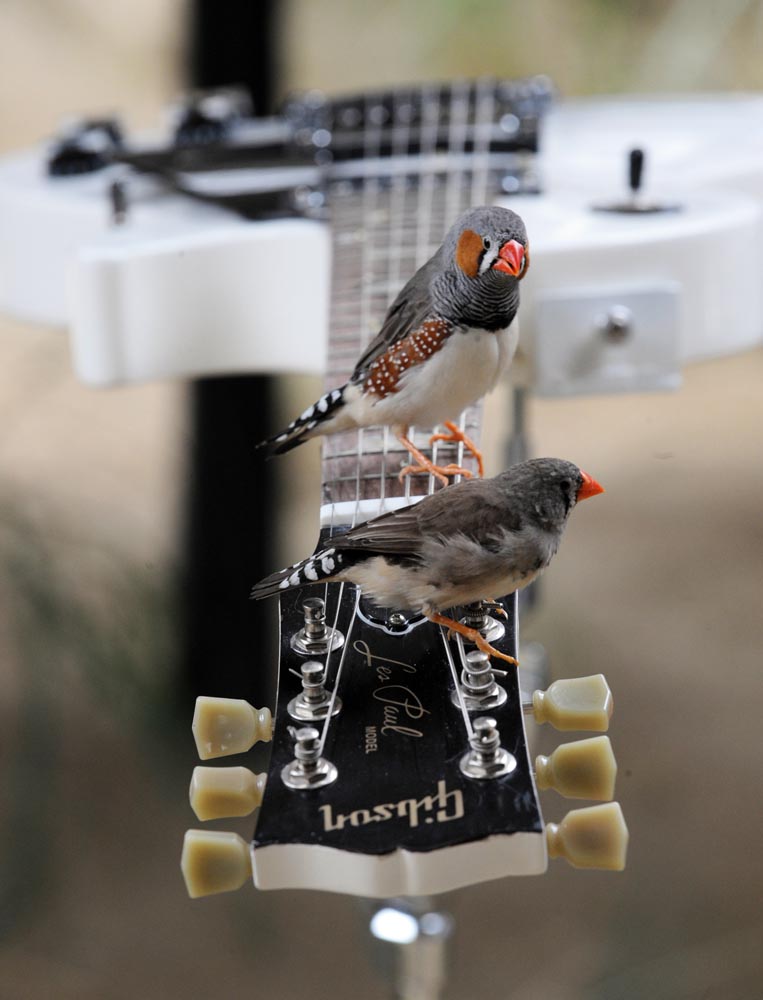
The gallery where the show is set up sounds more like an underground music club than an art museum. To enter you push through silver, chain-link curtains designed to keep the zebra finches from escaping. The room isn’t dark, though. The orange-beaked birds soar around the airy exhibition space that’s been transformed into a walk-in aviary. Their little clawed feet randomly alight on the bodies and necks of 10 white Les Paul electric guitars and four Thunderbird basses. The instruments are posed horizontally on stands, like perches.
The day I visited, French artist Celeste Boursier-Mougenot and Smith were tweaking amplifiers they strategically placed around the room. At one point a low note turned into a hum then a screech that would not stop. Smith says runaway feedback is one of the challenges that come with staging an art show in a museum that involves unpredictable living creatures.
“You know we’re working with industrial hygienists, we’ve done air-flow analysis. We had to hump several tons of sand up three flights of stairs,” he said, laughing.
That sand now blankets the gallery floor. Visitors mosey through the space on low, thin platforms. Woven nest “condos” hang from the ceiling. The museum enlisted local musicians and attendants to tune and clean the pooped-on guitars each day. Then there’s the veterinarian.
“I thought it was crazy," said Elizabeth Bradt who owns All Creatures Veterinary Hospital in Salem. For the next three months she’s got an additional title: vet for the art museum.
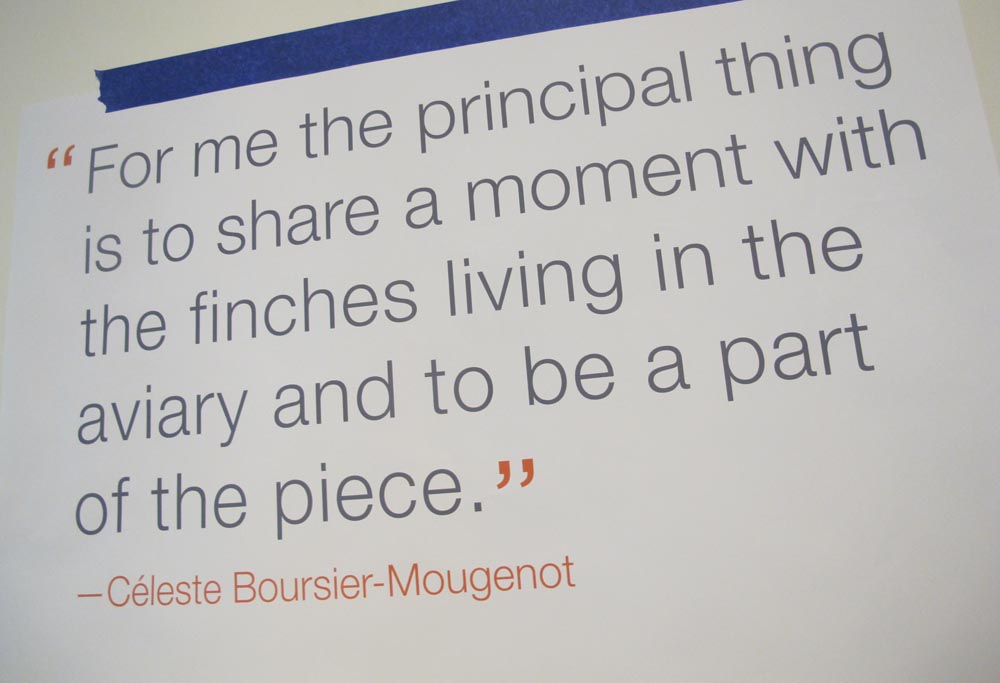
Bradt doesn’t see herself as the “artsy” type and admitted she had trouble getting her head around this birds-playing-guitars concept. She recalls when people from the museum called to ask if she'd be interested in helping them prepare the gallery for the finches.
“They showed me pictures of the exhibit at another museum,” she recalled, “and I saw this light-filled space — and it was beautiful — and I saw the guitars. But I couldn’t even imagine how they’d make all the changes.”
Changes like lighting, temperature and humidity, Bradt explained.
“The lighting was very important because they need UV light in order to be able to process calcium and vitamin D," Bradt said. "They needed to have the right temperature."
Bradt was here when the finches were released from their cages after being shipped up from an exotic bird supplier in New Jersey. The day we met at the museum, the veterinarian got the chance to listen to the birds shredding their axes for the first time.
“I could not believe what I just heard,” she gushed. “I thought a human being was playing the guitar. I pictured something really light and thin sounding."
The birds are extremely delicate though, Bradt said, and she'll be checking them every week throughout the show's run.
“A finch’s legs are like little toothpicks,” she described. “So I’m not grabbing these birds and giving them physical exams. That’s almost more of a danger to them. If there’s one that’s looking sick we can chase it around with a net and get it into a little hospital situation to make it feel better.”
That said, Bradt predicts — and hopes — the birds will be happy and healthy in their temporary home at the museum.
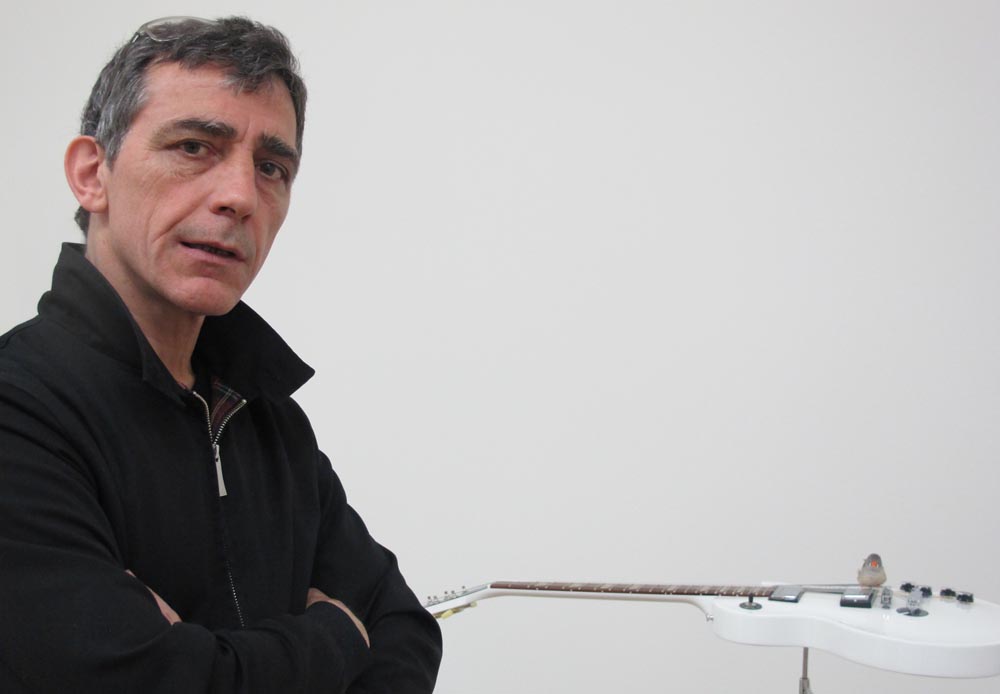
“I call the space finch’s territory,” French composer Celeste Boursier-Mougenot told me. He’s the man behind this flight of fancy.
The musician has also worked with fish, bees, cats and sheep — but the birds are one of his “hits,” he mused. The black-clad musician also joked that when he first paired sparrows with guitars in 1995 it was something of an accident.
“It’s because I was very limited as an instrumentalist,” he said, laughing. “So I found a strategy to get fingers — but they are flying fingers.”
Boursier-Mougenot tunes the electric guitars to rock and blues chords so they are musically compatible. He admires the birds’ unintentional creativity and calls them “funny little collaborators.” For him, working with them is a way to push the boundaries that often limit our ideas about what music is and can be.
Some people don’t like the finch’s music, Boursier-Mougenot has noted. Others, he said, stay for hours, perhaps mesmerized not only by the sounds they hear, but also by the ever-moving flock’s spontaneous swooping around the room.
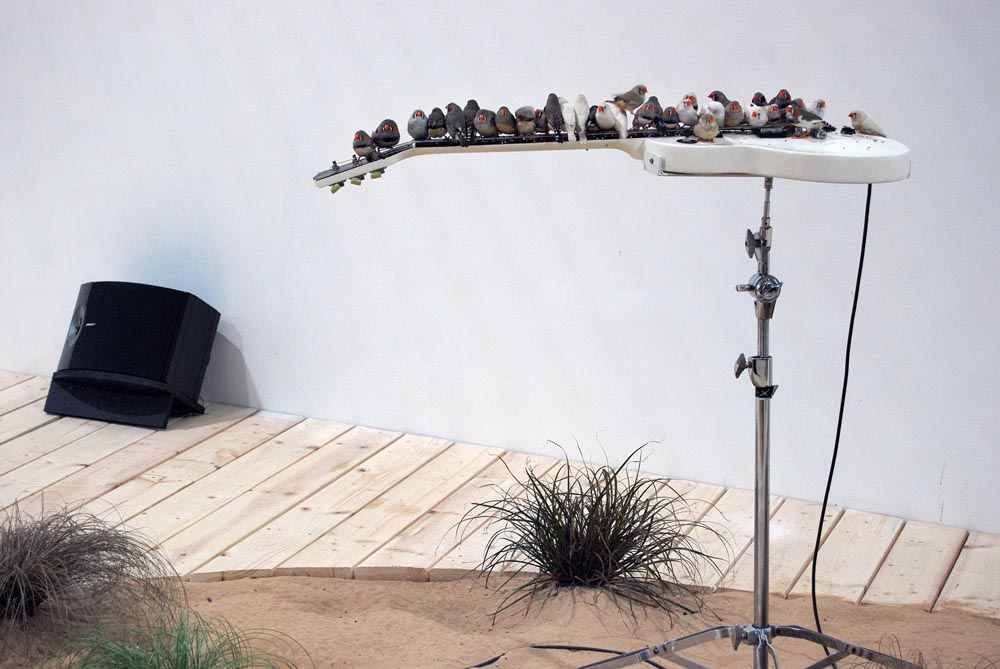
Only 20 people at a time are allowed in the gallery. Bradt said it seems the birds are used to being around people, so a Hitchcockian encounter is pretty unlikely. But the feathered musicians’ doctor does have one request.
“Please don’t step on the birds!” she implored with a smile. “Watch your feet.”
"From Here to Ear" opens Saturday Jan. 18 and runs through April 13 at the Peabody Essex Museum in Salem, Mass.
